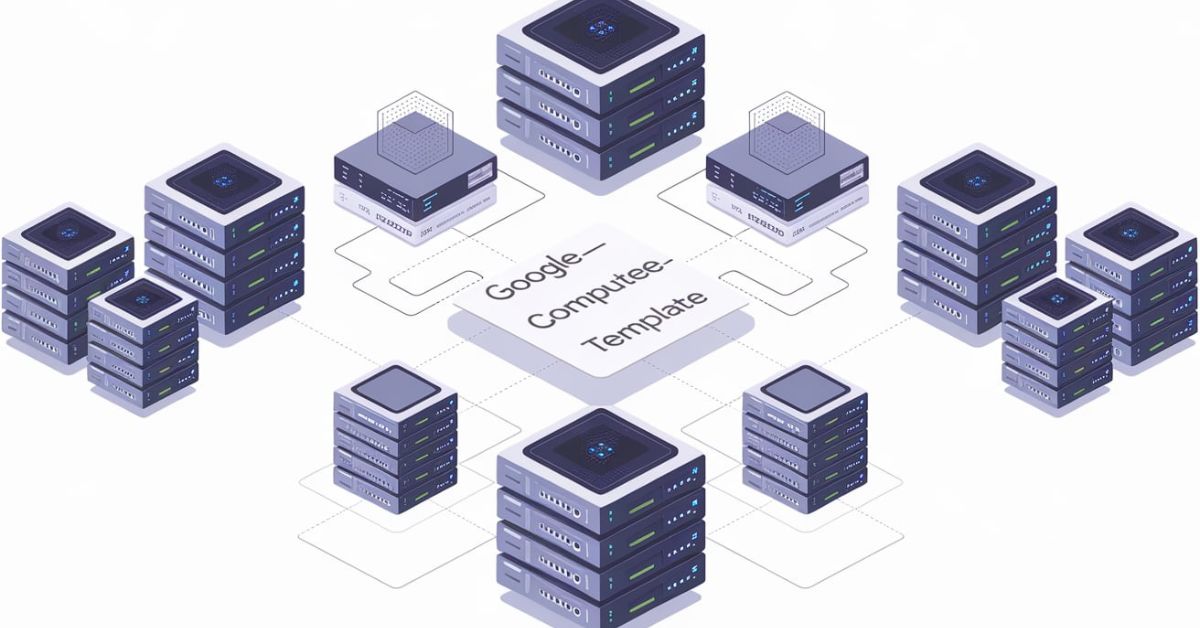Google_compute_region_instance_template – Know In Detail!
As businesses migrate to the cloud, managing infrastructure efficiently becomes critical to ensuring scalability, cost-effectiveness, and consistency. One essential tool within the Google Cloud Platform that aids this endeavor is the google_compute_region_instance_template.
The google_compute_region_instance_template simplifies VM deployment across multiple regions in Google Cloud, ensuring efficient resource management, cost savings, and scalability with pre-configured settings for consistent environments.
This article provides a deep dive into the workings of this tool, its advantages, and why mastering it can significantly improve your cloud operations.
Introduction to google_compute_region_instance_template – The Brief Guide!
The google_compute_region_instance_template is an essential tool for businesses utilizing the Google Cloud Platform (GCP) to manage virtual machine (VM) instances across multiple regions. It allows users to define a set of configurations for VM instances, such as the machine type, boot disk, network, and other attributes, and then deploy those configurations in various GCP regions seamlessly.
This ensures that every VM created in different regions has the same settings, optimizing operations, reducing errors, and improving efficiency. For companies with workloads spanning multiple regions, this tool simplifies managing large-scale deployments while providing flexibility and control over infrastructure.
Why Use google_compute_region_instance_template? – The Need of Work With!
Organizations face numerous challenges when deploying VMs across multiple regions, including inconsistent configurations, manual overhead, and increased error risk. The google_compute_region_instance_template solves these problems by offering a way to automate and standardize VM configurations across GCP’s extensive regional network.
Key reasons to use this tool include:
- Consistency: Ensures that all VM instances across regions follow the same pre-configured settings, reducing misconfigurations.
- Scalability: Easily deploy VMs in multiple regions without manual intervention.
- Cost Efficiency: Simplifies resource management, potentially reducing operational costs by automating deployment.
- High Availability: Ensures global availability of services by distributing VM instances across different regions.
Key Features and Benefits – Explore in Detail!
Global Reach with Regional Flexibility:
With GCP’s vast global network of regions, the google_compute_region_instance_template enables companies to deploy VM instances in a specific region or across several regions simultaneously. This is particularly useful for applications requiring low latency or high availability.
Customization and Reusability:
Once a template is created, it can be reused as often as needed. This reusability simplifies large-scale deployments while providing flexibility in making quick adjustments, ensuring that scaling your resources is hassle-free.
Pre-Configured Settings:
The template allows you to predefined configurations for critical VM components like machine types, boot disks, network settings, and startup scripts. This ensures that all instances launched from the template share the same baseline configuration, which leads to more predictable performance.
Improved Management:
Instead of configuring individual instances manually, administrators can create a google_compute_region_instance_template once and use it to launch hundreds or thousands of VMs with identical settings across multiple regions.
Enhanced Security and Compliance:
Deploying instances using templates reduces the risk of human error. Moreover, standardized templates ensure that all VM deployments follow the company’s security protocols, helping maintain compliance with internal and external regulatory requirements.
How google_compute_region_instance_template Works? – Explore the Working Module!
The google_compute_region_instance_template works by serving as a blueprint for VM instances. When an instance is created from a template, the VM automatically adopts the template’s configurations, such as the machine type, disk size, and network settings. This approach simplifies scaling and global management of infrastructure.
Steps include:
- Create the Template: Define the required configurations for your VMs.
- Deploy: Launch VM instances based on the template in one or multiple regions.
- Manage: Use GCP’s console or command-line tools to monitor and adjust the template as needed.
Step-by-Step Guide to Creating google_compute_region_instance_template – Here For You!
Follow these steps to create and deploy a google_compute_region_instance_template in GCP:
- Open the GCP Console: Navigate to the Compute Engine section.
- Create Template: Select “Create Instance Template” and define your settings, including machine type, boot disk, and network options.
- Configure Regional Settings: Select the regions where you plan to deploy your VMs.
- Save and Deploy: Save the template and deploy VM instances using your template.
This process helps automate and simplify deploying identical resources across multiple regions, improving management efficiency.
Best Practices to Utilize google_compute_region_instance_template
To get the most out of the google_compute_region_instance_template, follow these best practices:
- Standardize Your Templates: Ensure that templates adhere to your organization’s security and performance standards.
- Version Control: Maintain different versions of templates for different workloads or regions.
- Automation: Use automation tools like Google Cloud Deployment Manager or Terraform for large-scale deployments.
- Monitor and Optimize: Regularly monitor the performance of instances deployed using templates and optimize resource allocation to ensure cost efficiency.
Common Challenges and How to Overcome Them – Cope With Them!
Configuration Conflicts:
While google_compute_region_instance_template simplifies configuration, incorrect settings can still lead to errors. To avoid this, always test your templates in a staging environment before deploying them across multiple regions.
Resource Management:
Deploying too many instances in a region can lead to resource contention. Monitor your resource usage and adjust your template’s configurations to balance loads efficiently.
Frequently Asked Questions:
Can I modify a google_compute_region_instance_template after deployment?
No, once a template is deployed, you cannot modify it directly. However, you can create a new template or version for future deployments.
How do I ensure that my templates are compliant with security standards?
Incorporate security best practices like proper IAM roles, firewall settings, and disk encryption when creating your templates.
Can I use google_compute_region_instance_template for multi-cloud deployments?
No, google_compute_region_instance_template is designed for use within GCP. For multi-cloud, you’d need to use other orchestration tools like Terraform.
Conclusion:
The google_compute_region_instance_template offers a powerful solution for businesses looking to simplify VM management across multiple regions. Its ability to standardize configurations, improve scalability, and enhance resource efficiency makes it an essential tool for any organization using Google Cloud Platform.
Whether you’re managing a small business or a global enterprise, this tool can significantly enhance the way you manage your cloud infrastructure.





